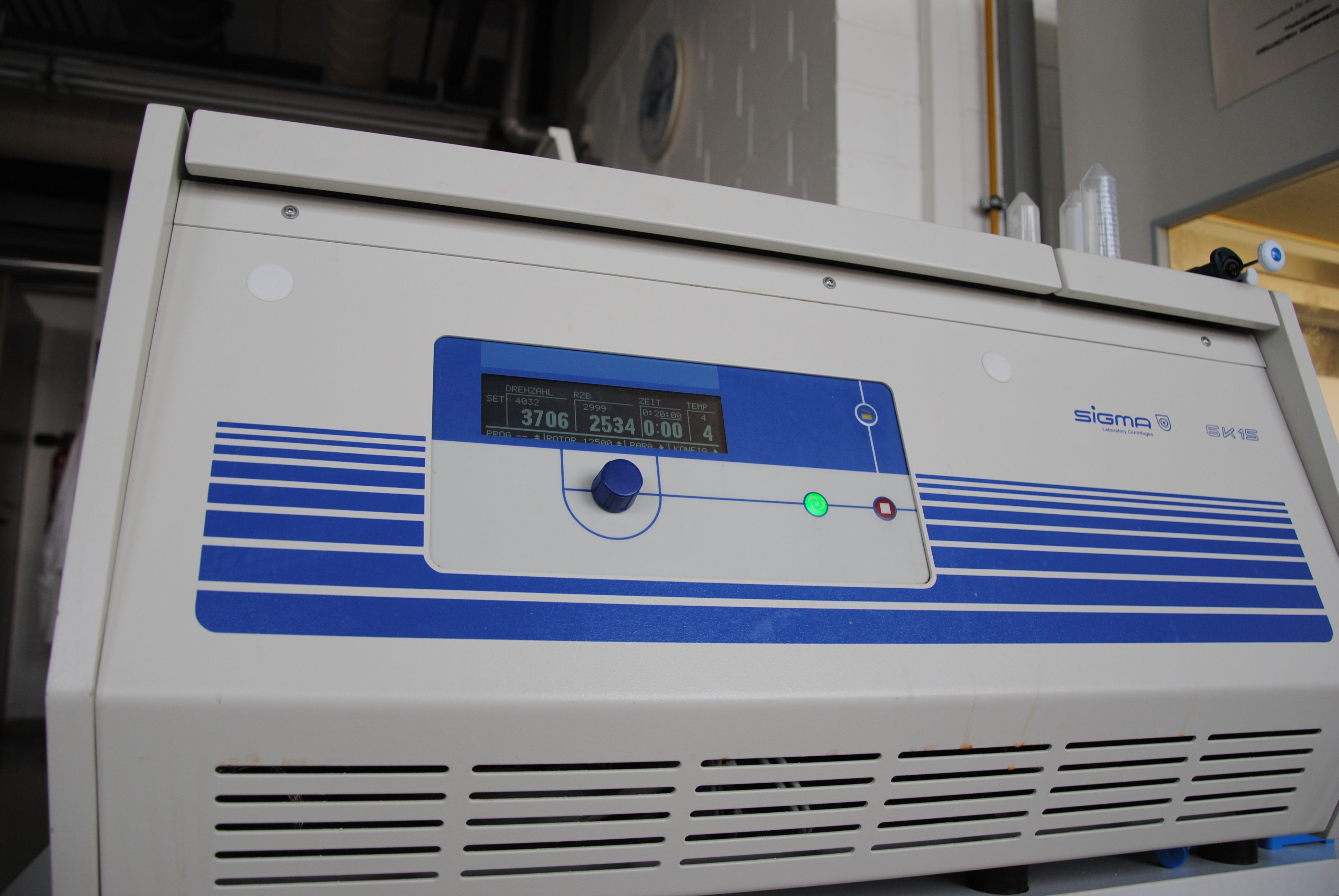Team:Bielefeld-Germany/Results/S-Layer/Guide/4b
From 2011.igem.org
(→Cell disruption with a high-pressure homogenizer) |
(→Cell disruption with a high-pressure homogenizer) |
||
| Line 10: | Line 10: | ||
The S-layer fusion proteins form inclusion bodies in the ''E. coli'' cells (at least most of them). Inclusion bodies have the advantage that they are relatively easy to clean-up and are resistant to proteases. But inclusion bodies are unsoluble so they have to be solubilized by urea or guanidin hydrochloride. In addition, these chemicals suppress the self-assembly ability of the S-layer proteins which leads to monomeric S-layer proteins. The cell disruption is carried out in a buffer containing 6 M urea, 50 mM Tris-HCl .... | The S-layer fusion proteins form inclusion bodies in the ''E. coli'' cells (at least most of them). Inclusion bodies have the advantage that they are relatively easy to clean-up and are resistant to proteases. But inclusion bodies are unsoluble so they have to be solubilized by urea or guanidin hydrochloride. In addition, these chemicals suppress the self-assembly ability of the S-layer proteins which leads to monomeric S-layer proteins. The cell disruption is carried out in a buffer containing 6 M urea, 50 mM Tris-HCl .... | ||
| - | + | Commonly used lab methods like sonification or enzymes for cell disruption are unpracticable when you have to disrupt bigger amounts of biomass. Mechanical methods like pebble mills or high-pressure homogenizers are the methods of choice in this case. But mechanical application of energy always leeds to heat input. Heat can damage your proteins so you have to ensure a sufficient cooling of the cell solution during cell disruption. We did this by placing our high-pressure homogenizer in the cooling chamber of our lab and not running it continuously but in cycles (3 cycles with cooling phases between the cycles, p = 800 bar). | |
The cell debris is removed by centrifugation and the supernatant is used for further purification. | The cell debris is removed by centrifugation and the supernatant is used for further purification. | ||
Only purified S-layer proteins will self-assemble - [[Team:Bielefeld-Germany/Results/S-Layer/Guide/5 | click here for further purification steps]]. | Only purified S-layer proteins will self-assemble - [[Team:Bielefeld-Germany/Results/S-Layer/Guide/5 | click here for further purification steps]]. | ||
Revision as of 18:56, 28 October 2011

Cell disruption with a high-pressure homogenizer
The S-layer fusion proteins form inclusion bodies in the E. coli cells (at least most of them). Inclusion bodies have the advantage that they are relatively easy to clean-up and are resistant to proteases. But inclusion bodies are unsoluble so they have to be solubilized by urea or guanidin hydrochloride. In addition, these chemicals suppress the self-assembly ability of the S-layer proteins which leads to monomeric S-layer proteins. The cell disruption is carried out in a buffer containing 6 M urea, 50 mM Tris-HCl ....
Commonly used lab methods like sonification or enzymes for cell disruption are unpracticable when you have to disrupt bigger amounts of biomass. Mechanical methods like pebble mills or high-pressure homogenizers are the methods of choice in this case. But mechanical application of energy always leeds to heat input. Heat can damage your proteins so you have to ensure a sufficient cooling of the cell solution during cell disruption. We did this by placing our high-pressure homogenizer in the cooling chamber of our lab and not running it continuously but in cycles (3 cycles with cooling phases between the cycles, p = 800 bar).
The cell debris is removed by centrifugation and the supernatant is used for further purification.
Only purified S-layer proteins will self-assemble - click here for further purification steps.
 "
"


